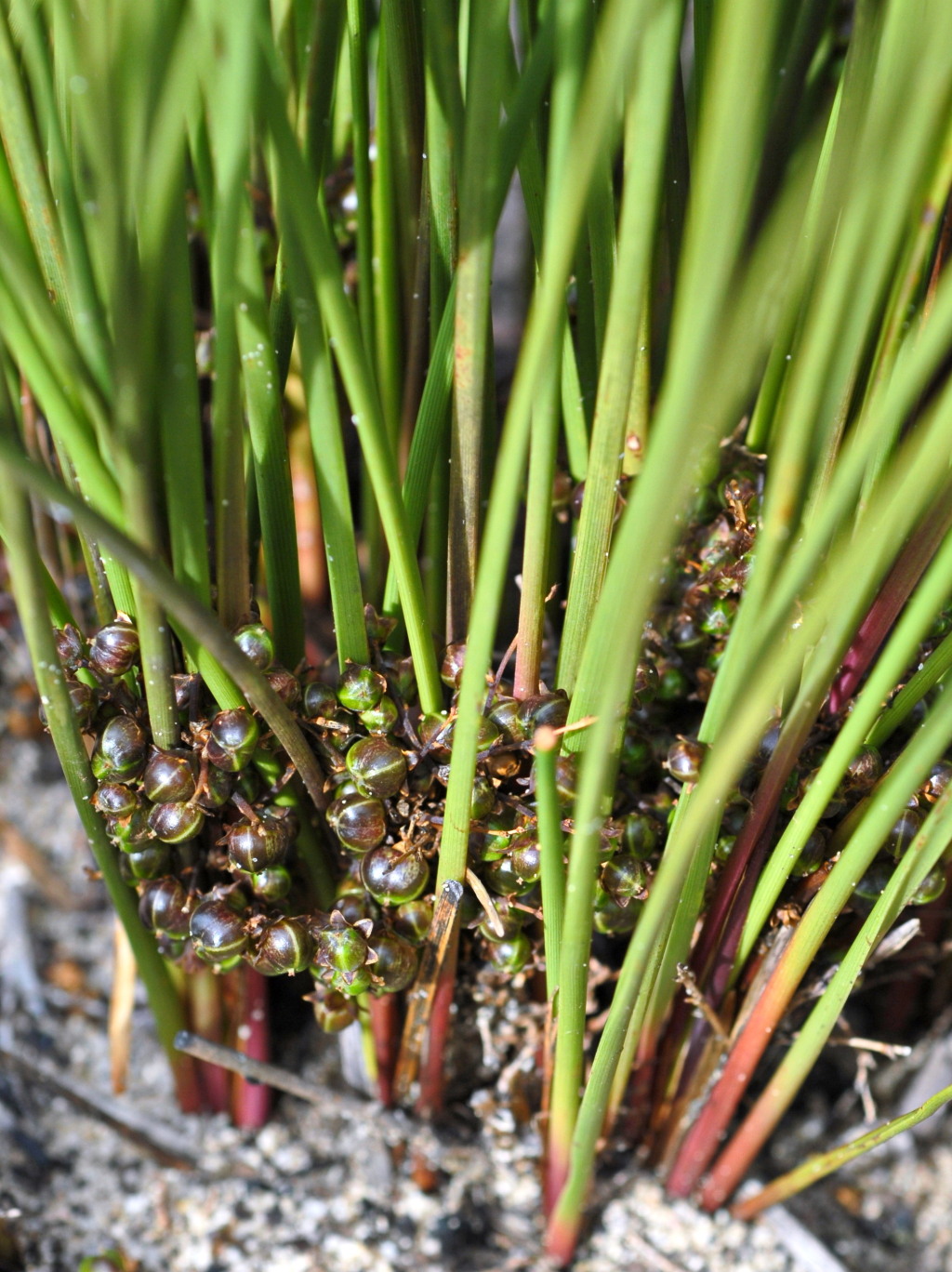Lomandra micrantha
(Endl.) Ewart Small-flowered MatrushTussocks small. Leaves flat, plano-convex to terete, 20–70 cm long, up to 5 mm wide, red-brown basally; basal sheath gradually tapering distally, usually torn, dark to light brown; apex broadly acute to obtuse. Male and female inflorescences dissimilar, up to 0.3–0.75 times as long as the leaves; axes smooth, slightly scabrid or conspicuously covered with wart-like projections; non-flowering axis hidden or exposed for 0.5–2.5 cm. Male inflorescences branched, 6–27 cm long, c. one- to three-quarters as long as the leaves; flower-bearing axis 3–15 cm long; flowers separate or in pairs. Female inflorescences branched or unbranched, 3–18 cm long; flower-bearing axis 3–5 cm long; flowers separate. Bracts 1–3 mm long, pale brown to translucent. Flowers pedicellate, greenish-yellow to dark red; perianth segments similar, spreading or reflexed at anthesis; male flowers separate or in pairs, 1.5–3 mm long; female flowers separate, 3–5.5 mm long.
LoM, MuM, Wim, GleP, Brid, VVP, VRiv, GipP, OtP, WaP, Gold, CVU, GGr, DunT, NIS, EGL, EGU, WPro, HSF, HNF, OtR, MonT, VAlp.
This species is widespread in southern mainland Australia, with 2 of the 3 recognized subspecies occurring in Victoria.
Conn, B.J. (1994). Xanthorrhoeaceae. In: Walsh, N.G.; Entwisle, T.J., Flora of Victoria Vol. 2, Ferns and Allied Plants, Conifers and Monocotyledons, pp. 720–734. Inkata Press, Melbourne.
 Spinning
Spinning



